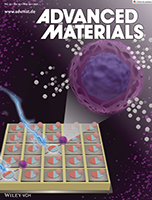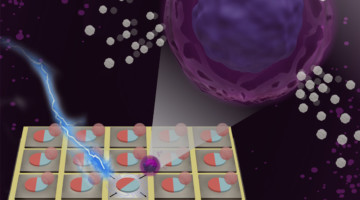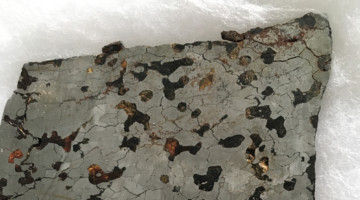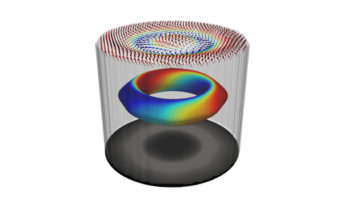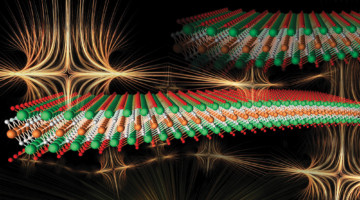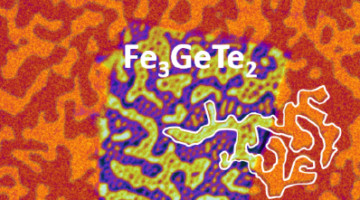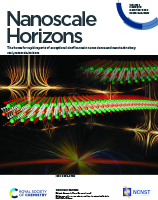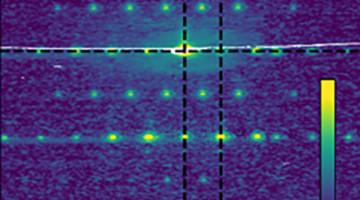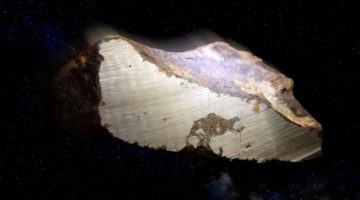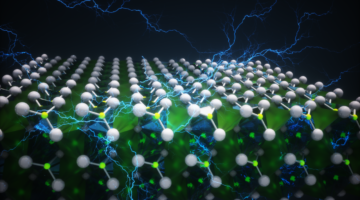Researchers develop programmable multiferroic micromotors that enable single-cell manipulation based on time-dependent functions of individual cells, such as cell secretion. Smart programmable multiferroic materials lay the groundwork for large-scale automated single-cell sorting and enable a broad spectrum of biotechnology applications. Read more »
Programmable Micromagnets for Single-Cell Sorting
Researchers demonstrated that electrically induced mechanical strain can control the magnetic state of tiny magnets used to sort biological cells. The work lays the foundation for a programmable, single-cell sorting platform to support a wide variety of biotechnology applications, including personalized cancer treatments. Read more »![]()
![]()
Meteorites Reveal Magnetic Record of Protoplanet Churn
Researchers detected the signatures of ancient magnetic fields imprinted in the ferromagnetic grains of meteorites that originated from the same parent body. The results, combined with radioisotopic dating of the samples, support an extended time frame for the cooling of molten protoplanetary cores. Read more »
The Spintronics Technology Revolution Could Be Just a Hopfion Away
Scientists have long treated skyrmions as merely 2D objects. Recent studies, however, have suggested that 2D skyrmions could actually be the genesis of a 3D spin pattern called hopfions. Now, a team of researchers has reported the first demonstration and observation of 3D hopfions emerging from skyrmions at the nanoscale in a magnetic system. Read more »
2D MXene Shows Evidence of a Magnetic Transition
A variety of experiments, including ALS x-ray studies, provided direct evidence of a magnetic transition in a 2D compound called a MXene (pronounced “maxene”). The finding adds new functionality to a family of materials with numerous ways to fine-tune properties for applications ranging from spintronic devices to electromagnetic shielding. Read more »![]()
![]()
From Stripes to Skyrmions in a Surprising Material
Researchers showed that tiny bubbles of ordered spins (skyrmions) can be induced to form in a material previously considered incompatible with skyrmion formation. The discovery opens up a new class of material systems that exhibit technologically desirable nanoscale features attractive for spintronic applications. Read more »![]()
![]()
Evidence of a magnetic transition in atomically thin Cr2TiC2Tx MXene
2D magnetic materials have recently attracted significant interest as model systems to understand low-dimensional magnetism and for potential spintronic applications. Here, we report on synthesis of Cr2TiC2Tx MXene and a detailed study of its magnetic as well as electronic properties. Read more »
Artificial Antiferromagnets Facilitate Studies of Domain-Wall Motion
Researchers fabricated artificial spin lattices that undergo a paramagnetic-to-antiferromagnetic phase transition. These artificial antiferromagnets enable studies of dynamical properties that are critical to understanding, and ultimately implementing, real-world applications such as advanced computing and data-storage technologies. Read more »
X-Rays Recount Origin of Oddball Meteorites
Reconstructions of 3D patterns of magnetic orientation imprinted in rare meteorites helped resolve questions about their origins. Known as type IIE iron meteorites, they appear to have originated from a parent body that had a composition featuring both fully melted and unmelted parts—other meteorite types display only one composition. Read more »
Unexpected Rise in Ferroelectricity as Material Thins
Researchers showed that hafnium oxide surprisingly exhibits enhanced ferroelectricity (reversible electric polarization) as it gets thinner. The work shifts the focus of ferroelectric studies from more complex, problematic compounds to a simpler class of materials and opens the door to novel ultrasmall, energy-efficient electronics. Read more »![]()
![]()
